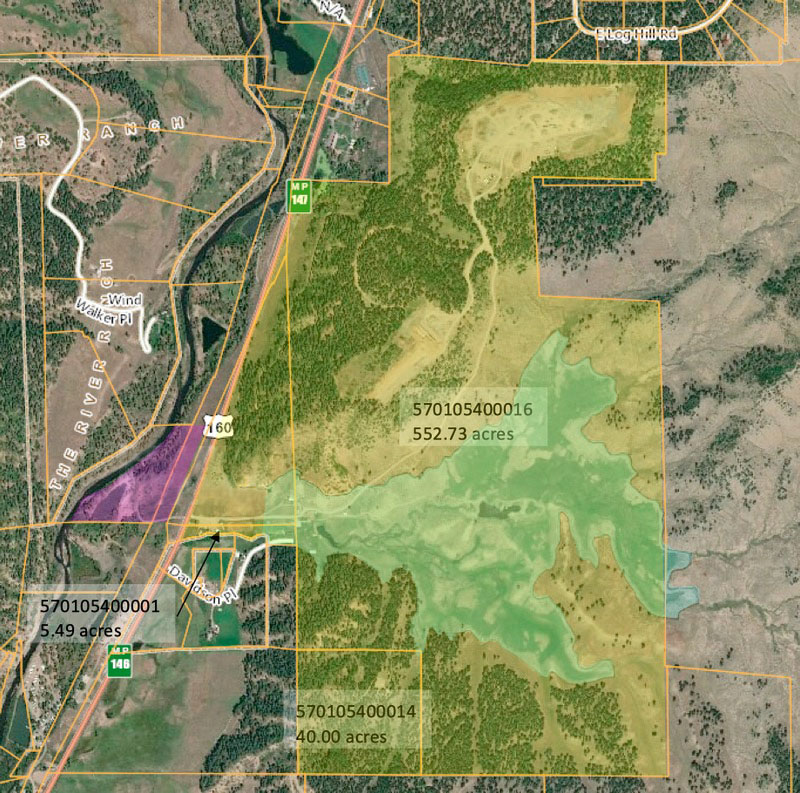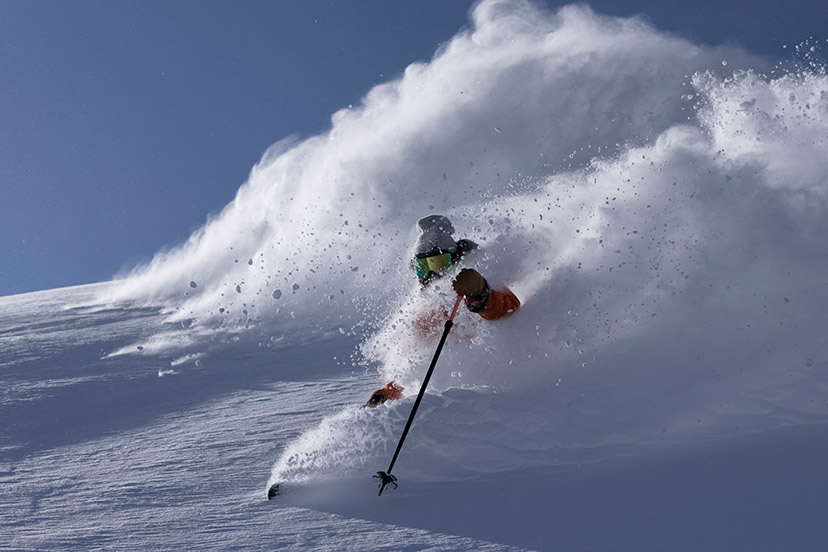PHOTO: Photo by Scott DW Smith, courtesy Wolf Creek Ski Area.
Wolf Creek Ski Area announced this morning that its received about 407 inches (33 feet) of snow so far this year, up in the San Juan Mountains.
The snowpack promises full Pagosa Springs reservoirs this spring. In fact, they are practically full already. A friend told me yesterday that Stevens Reservoir — our largest water storage installation — is already spilling over the dam. Overflowing, in other words.
The reservoirs were full last spring as well.
In fact, the five main reservoirs that store water for the Pagosa Area Water and Sanitation District (PAWSD) are typically full every spring. In spite of worries about global warming, PAWSD has been blessed with sufficient water resources for the entire 30 years I’ve lived here in Pagosa. Even during the historic 100-year drought of 2002, we were still allowed to water our lawns with PAWSD water.
Back in 2009, during the active controversy around the proposed Dry Gulch Reservoir project and the new “Water Resource Fees” being collected by the Pagosa Area Water and Sanitation District (PAWSD) to fund a future reservoir, one of the PAWSD board members offered her justification for new fee.
“What if you turned on the tap, and no water came out?”
It’s now been more than a dozen years since I heard that comment in a public board meeting, and our water district is delivering less water per year than they did in 2001 — even though the population served by PAWSD has since increased by about 33%. Meanwhile, PAWSD has spent millions of customer dollars on upgrades and expansion projects, such as the Dutton Ditch pipeline, the Stevens Reservoir expansion, and the San Juan Treatment Plant upgrades.
Without constructing any new reservoirs, the community’s water supply — looking thoughtfully into the future — appears more secure than it did in 2008, when PAWSD and the San Juan Water Conservancy District (SJWCD) collaborated to put the community $10 million in debt to purchase the 660-acre Running Iron Ranch, about two miles north of downtown Pagosa Springs. (The property was recently appraised at $4.5 million.) The ranch was purchased as the site for the Dry Gulch Reservoir. Someday.
A small group of local volunteers who happen to serve on the SJWCD board are continuing to advocate for an new reservoir there… possibly as large as 11,000 acre feet, which is ten times the size of Stevens Reservoir.
The SJWCD board met earlier this month with another small group of local volunteers — the PAWSD board of directors — to discuss items of mutual interest.
Such as the Dry Gulch Reservoir. About which a difference of opinions was evident.
Disclosure: I currently serve on the PAWSD board of directors, but this editorial series reflects only my personal opinions and not necessarily the opinions of the PAWSD board as a whole.
The joint conversation began with a discussion about Aspen Springs. The Aspen Springs subdivision — one of the largest subdivisions in Colorado, in terms of acreage — was platted in the late 1960s without any plans for municipal water or sewer, and with barely-passable dirt roads. The roads have been significantly improved since, thanks to a hefty mill levy that funds the Aspen Springs Metro District; the roads are now some of the best-maintained gravel roads in the county.
Water is a different story. In general, water has to be trucked in to each individual property from fill stations several miles away. The Metro District received a grant, several years ago, to develop its own neighborhood fill station based on an artesian aquifer, but the project ultimately failed, due to excessive sediment in the water.
Meanwhile, PAWSD serves the (largely vacant) Elk Park subdivision, immediately east of Aspen Springs, with a 12-inch water line. Running that line down Highway 160 to a convenient location in Aspen Springs, and relocating one of the three PAWSD fill stations to Aspen Springs, could provide convenient treated drinking water to a community of about 1,000 residents, at a cost of perhaps $1.5 million. Commercial businesses along the highway could possibly tie directly into the new water line.
PAWSD District Manager Justin Ramsey wondered if SJWCD would be willing to take on the task of meeting with the Aspen Springs Metro District, and discuss the idea of seeking grants to fund such a project. It sounded like the SJWCD board was willing to bird dog this idea. Assuming the Metro District is interested?
The next discussion involved a preliminary concept to build some workforce housing on the Running Iron Ranch property, adjacent to Highway 160. The idea came up initially because PAWSD needs housing for the workers who will — someday — be building the new Snowball Water Treatment Plant on Snowball Road.
The proposed Running Iron Ranch site has utilities nearby, and highway access. Preliminary estimates for a 10-affordable-housing-unit project have been in the $1.5 million to $2 million range.
But PAWSD does not yet have any funding source available. Both boards seemed interested in seeing the project move forward, if the financing can be found. The State of Colorado recently developed a couple of new grant programs for affordable housing, so this might be feasible.
No one stepped up immediately, however… to voluntarily spearhead the project.
Next on the agenda was a discussion about water, from a different perspective. That is to say, the ‘recreational’ use of water.
The 2008 purchase of the Running Iron Ranch included about 20 acres along the San Juan River — marked in pink on the map below. The rest of the Running Iron Ranch is marked with a yellow overlay. (I’ve indicated the site of a potential reservoir in light blue… but we can discuss that particular feature later in this editorial series…)

Originally, this riverfront parcel (in pink) was going to accommodate a multi-million-dollar pumping station, to pump water from the San Juan River (the dark ribbon on the left side running north-south) into the planned reservoir. No one is currently talking about the need for a pumping station.
And only certain people are still talking about a reservoir.
It’s possible, however, that someone (perhaps the Archuleta County government?) would like to construct and maintain a rafting ‘put-in’ on this (pink) 20-acre parcel.
How might that work out?

